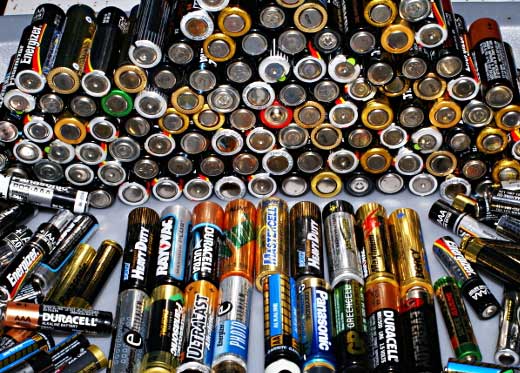You can get regular batteries, and you can get rechargeable batteries. But why aren’t all batteries rechargeable? After all, they were chargeable once, right? They don’t just fall from the sky fully charged, right? Has it ever made you wonder about exactly what the difference is?
It’s true, all batteries are designed to take a charge. And if you want to know the dirty little secret… almost all batteries could actually be recharged under the right circumstances. So why aren’t they all sold as rechargeable?
It’s about intent
The real difference between a regular alkaline battery and a rechargeable one is that the rechargeable one is made to be recharged. Recharging a battery puts a lot of stress on it, as the energy flows into the chemicals inside the battery. If you were to try to recharge your garden-variety Duracell, it would probably pop. It’s not physically strong enough to deal with the chemical reactions taking place inside it. Sure, the first time it was charged it made it ok, because it was in a factory where it was being very carefully babied. But in a home charger, it probably won’t make it.
On the other hand, the physical structure of a rechargeable battery will hold up to the stress quite well, and the chemical design of a rechargeable battery makes those stresses lower. So it becomes completely safe to recharge your battery.
Materials make a difference
Your typical non-rechargeable battery is made of zinc and manganese oxide. This is a more advanced sort of battery known as an alkaline battery. Alkaline batteries use a solution of potassium hydroxide, which doesn’t have a tendency to burn your skin like ammonium chloride or sulfuric acid. Both of those solutions find a use in batteries. Normal inexpensive batteries use ammonium chloride while cars use sulfuric acid.
By the way, “alkaline” is just a word that means the opposite of “acidic.” There’s a lot more to unpack there but this isn’t a 10th grade chemistry class and I really ought to get back to topic.
The materials in a non-rechargeable, or primary, battery, are not designed to be recharged. The charging process can cause a dangerous thermal reaction in some cases. You should never try to recharge a non-rechargeable battery if you don’t know what you’re doing.
However, the materials in a rechargeable battery will go back and forth from a charged to a discharged state several times. Their design allows this. Early rechargeable batteries used nickel, cadmium, and other heavy metals. Today’s batteries use lithium. A lithium battery can charge and discharge far more often without becoming spent.
All batteries today either use a completely liquid solution, a paste solution, or a gel solution to keep the positive and negative bits separated. This is great as far as it goes but it creates a danger that the battery will leak materials out. Rechargeable batteries can get hot if you charge them too fast. They can also swell. A swollen, hot battery has a tendency to explode. When that happens nobody wins.
Toward a solid state battery
The “holy grail” of battery manufacture would be a “solid-state” battery. This would be a battery where all the materials were completely solid. Such a battery would be stronger. It might, in fact, be strong enough to be a structural part of a phone. It would be very resistant to swelling. In fact in theory a solid-state battery would have a higher “energy density,” meaning a smaller battery could provide more power. That’s what everyone wants — a battery the size of an aspirin that can power a Tesla. That’s a bit far off, but it’s possible we’ll see solid-state batteries of some sort in the next few years. If solid state batteries become a reality, single-use batteries will probably begin to die off completely. That’s good news for the environment and should eventually make everything cheaper.
One more thing…
Here’s a little secret most of you won’t know or didn’t remember… in the 1980s there were devices that let you recharge regular batteries. They were super-slow, often taking three days to charge up a battery, and the recharged batteries usually didn’t do well in them. They weren’t worth the money and that’s why they aren’t on the market today.





